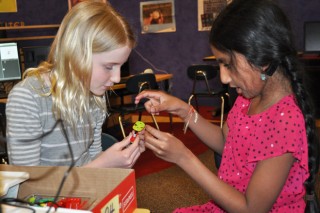How is the president of the United States elected? The answer to this question is complex, and it addresses concepts that 5th graders have little experience with, such as “caucus” and “electoral college.”
Oftentimes, the best way to learn a concept is to relate it to something that interests you. A common passion among most 5th graders is food. So why not translate the presidential election process to a CANDY ELECTION?
The 5th grade candy elections have proven to be an exciting, interactive way for the election process to come alive for students. On the first day of the primary elections, students are placed into three political parties: Crunchy, Chewy and Chocolate. They nominate candies within their party, and each student picks a favorite from their party’s list. Party members create arguments why a certain candy is the best. Students give speeches and each party holds a primary election.
To represent the primary election process, each student draws card out of a hat, which contains the name of a state and the number of delegates of that state. During the primary election, students give delegates to the candy of their choice, only voting within their political parties. The “candy-date” that earns the most number of delegates for each party goes on to the general election.
Students then prepare for Candy Debates. Members of the three parties participate in debates in which they publicly discuss why their candy is more qualified than the others. On Election Day, there is a taste test, and students vote for their favorite candy out of the three finalists. Again, they draw a state out of a hat, but this time they assign all of the states’ electoral votes to the candy of their choice. The candy that earns the most electoral votes is crowned “Best Candy in the World.” No matter if the Crunchy Party, Chewy Party or Chocolate Party prevails, all students enjoy this sweet experience in 5th grade social studies.
– Kathleen Pease, 5th grade teacher



